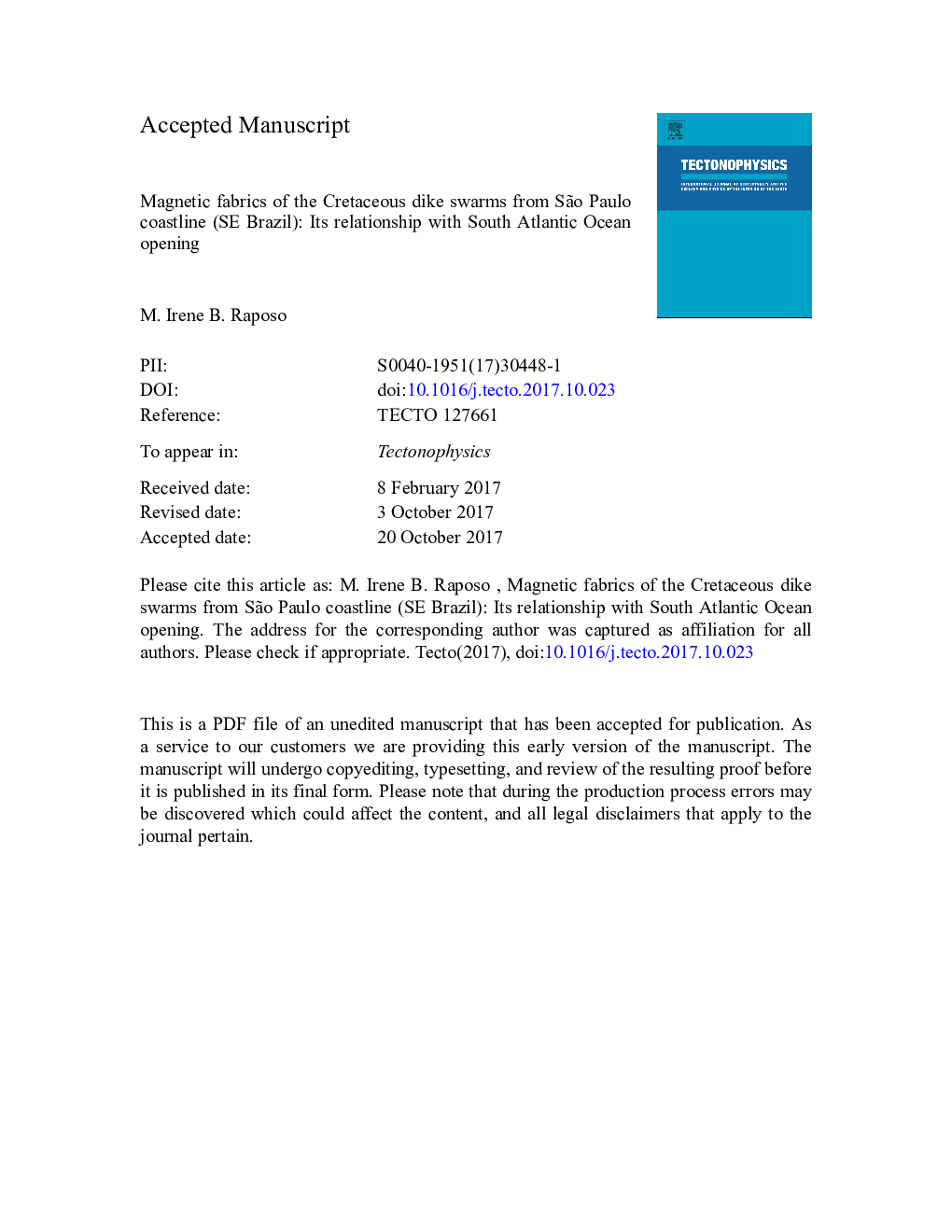| کد مقاله | کد نشریه | سال انتشار | مقاله انگلیسی | نسخه تمام متن |
|---|---|---|---|---|
| 8908872 | 1636688 | 2017 | 66 صفحه PDF | دانلود رایگان |
عنوان انگلیسی مقاله ISI
Magnetic fabrics of the Cretaceous dike swarms from São Paulo coastline (SE Brazil): Its relationship with South Atlantic Ocean opening
دانلود مقاله + سفارش ترجمه
دانلود مقاله ISI انگلیسی
رایگان برای ایرانیان
کلمات کلیدی
موضوعات مرتبط
مهندسی و علوم پایه
علوم زمین و سیارات
فرآیندهای سطح زمین
پیش نمایش صفحه اول مقاله

چکیده انگلیسی
Magnetic fabric and rock magnetism studies were performed on 91 dikes from Cretaceous diabase and lamprophyre dike swarms that outcrop side by side on the beaches of NE São Paulo State coastline. The dikes crosscut Archean and Proterozoic poly-metamorphic rocks of the Costeiro Complex. Their thicknesses range from a few centimeters to 2 m for lamprophyre and up to about 10 m for the diabase. They trend predominantly N30°-60°E with vertical dip. Magnetic fabrics were determined using anisotropy of low-field magnetic susceptibility (AMS) and anisotropy of anhysteretic remanent magnetization (AARM). Rock-magnetism measurements reveal that magnetite grains in the range of 2-5 μm are the magnetic mineral of both swarms. For most dikes, these grains are the carriers of bulk magnetic susceptibility but, surprisingly, are not responsible for the AMS which is carried by Fe-bearing minerals as shown by AARM. The main AMS fabric recognized in the swarms is due to magma flow, in which the Kmax-Kint plane is parallel to the dike's plane, and the magnetic foliation pole (Kmin) is perpendicular to it. The analysis of the Kmax inclination showed that the dikes were fed by horizontal to vertical flows. However, for the majority of the dikes the AMS and AARM tensors are not coaxial. The AARM lineation (AARMmax) is oriented N30-60W, approximately perpendicular to AMS lineation (Kmax) suggesting that magnetite grains were rotated approximately 90° anticlockwise from the dike plane. The AARMmax orientation is similar to the direction of a fault system mainly in the Santos marginal basin which was formed in the Cretaceous rifting during the South Atlantic opening. Therefore the AARM fabric is tectonic in origin, and the comparison of AMS and AARM fabrics suggests that lamprophyre and diabase dikes were emplaced in three distinct events in the earliest stages of the South Atlantic opening.
ناشر
Database: Elsevier - ScienceDirect (ساینس دایرکت)
Journal: Tectonophysics - Volume 721, 28 November 2017, Pages 395-414
Journal: Tectonophysics - Volume 721, 28 November 2017, Pages 395-414
نویسندگان
M. Irene B. Raposo,